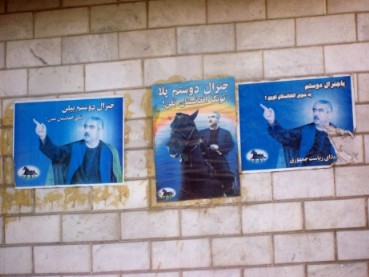What the News Media Don’t Tell You About Afghanistan
Media in the United States have greatly exaggerated any victories for women’s rights, and downplayed the conditions of warlordism, oppression and poverty that still flourish. In a recent trip to Afghanistan, Co-Directors of the Afghan Women’s Mission, Sonali Kolhatkar and James Ingalls found that the situation of women and girls was extremely dire.
- Download a flyer.
- AWM Interview on Democracy Now!
- Click here if you are a member of the media and are interested in an interview.
Warlords Still Dominate Afghanistan
Most Afghans voted for Hamid Karzai in the recent Presidential elections based on his promises to undermine warlords. Unfortunately, Karzai recently announced that Northern Alliance warlord Abdul Rashid Dostum was the country’s new Military Chief of Staff. Another warlord, Ismail Khan, was appointed Minister of Energy. Many of the Afghan warlords were backed by the US in the 1980s and 90s, and again in 2001 to help oust the Taliban. US Ambassador Zalmay Khalilzad claims that “Karzai’s decision to …give a role to…regional strongmen is a wise policy.” But all the Afghans we spoke with were dismayed and cited warlordism as the most important problem facing Afghanistan today. Men like Dostum and Khan have their “hands soaked in the blood of our people,” we were told. The Afghanistan Independent Human Rights Commission recently released a report entitled “A Call to Justice” based on surveys of thousands of Afghans across the country, whose most ardent plea is for there to be justice for past war crimes by warlords. US media have failed to expose the crimes of these warlords, the Afghan people’s hatred of them, and the US responsibility for bringing them to power.
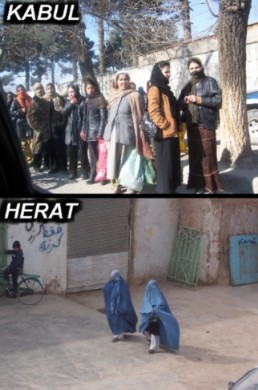
After the fall of the Taliban, media outlets gushed over Afghan women discarding their veils. While most US media have overemphasized the importance of the burqa as the sole feature of Afghan women’s oppression, even by that standard their assessment of women’s freedom is wrong. In the Western city of Herat, governed until recently by the Northern Alliance fundamentalist warlord Ismail Khan, women still cover themselves in public and rarely walk on the streets. One woman in Herat told us that while it was now legal for her to walk uncovered, she did not feel safe doing so and hoped that there would come a time when she could dress as she did in Pakistan when she was a refugee.
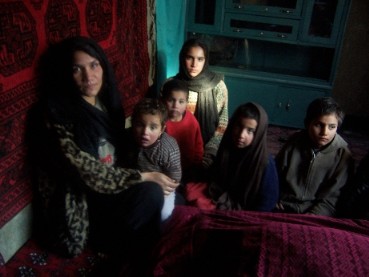
Anor Gul is a 30 year old mother of 5 who returned from Pakistan a few years ago. Pakistan was home to over a million Afghans, many thousands of whom returned to their homeland after the fall of the Taliban. The Bush administration and US media cited the return of these refugees as a sure sign that Afghanistan was now free and that returnees were “voting with their feet for the future of their country” (Colin Powell, 03/31/04). What the US media has failed to cover is that most refugees returned to find their homes destroyed or occupied by warlords, and little to no affordable housing or job-training. We spoke to Anor Gul in her home, a single makeshift room in a squatters’ village. She broke down in tears four times while we spoke with her. “I think that no one has a life as bad as I have here.”
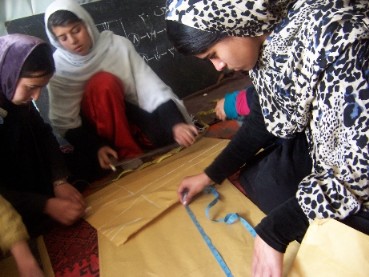
Most US media reports have convinced us that Afghan women are working alongside men. The reality is that there are no job opportunities for women. According to a recent report in the Sunday Herald (Scotland), “since the fall of the Taliban, only 2-3% of women have returned to work” (01/23/05). We visited a sewing class in Kabul that RAWA funds, run out of the teacher’s home. The class teaches women and girls the skills to sew and embroider clothes that they can then sell. The students in the class complained to us that even once they learn the skills there will be no opportunity or space for them to sell their clothes. After all, most professional tailors in Kabul are men.
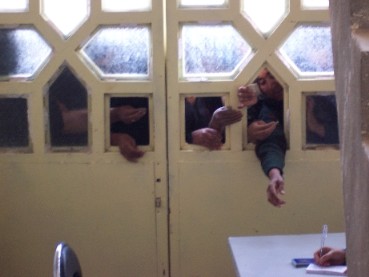
US media have failed to cover the on-going health care crisis in Afghanistan. According to United Nations data, Afghanistan has among the world’s highest rates of maternal mortality, and “remote, impoverished Badakhshan has the highest rate ever recorded anywhere in the world, with one mother dying in every 15 births” (Pakistan Tribune, 02/24/05). We visited the remote Western province of Farah and were told by local residents that access to health care was their greatest need. Unfortunately most aid organizations in the area have ignored that need. Farah has only three clinics. Of these only Hamoon Health Center provides free health care for women but can afford to pay only one doctor for a few hours each day. We witnessed hundreds of women and children desperately crowding the clinic seeking treatment.
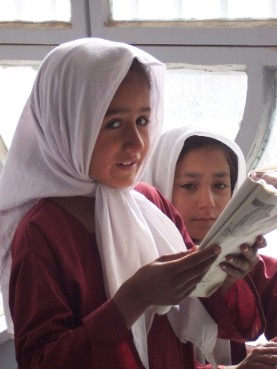
While the Bush administration boasts that millions of Afghan girls are now going to schools, what US media outlets won’t tell you is that schools are still scarce in rural areas, and most schools that do function teach a curriculum limited to Islamic studies, similar to boys’ schools during the Taliban era. A recent UN report concluded that Afghanistan has the “worst education system in the world”, and one of the lowest adult literacy rates, 28.7 percent (Feb 05). We visited Daanesh School in the village of Rokin, Farah Province, a remarkable exception to this rule. Run by RAWA, Daanesh is the only girls school in the region, providing an excellent well-rounded education for hundreds of girls from surrounding villages who would otherwise have no education at all. However, falling donations prevent RAWA from opening more schools.
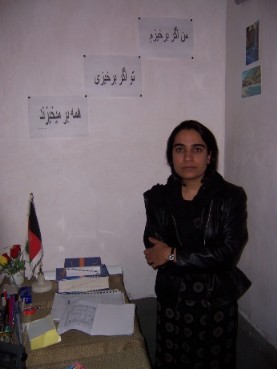
In the 2003 Loya Jirga (Assembly) at which Afghanistan’s Constitution was ratified, a young woman named Malalai Joya representing Farah Province spoke out against domination by warlords. US Ambassador Zalmay Khalilzad lauded the “democratic process of debating, listening and compromising” and praised Joya’s refusal to be intimidated (Washington Post, 01/06/04). But he, and the US media, ignored the death threats made against her after her speech. After vicious retaliatory attacks at her home and office, and continued threats, she now lives with 24 hour security guards, a constant reminder that true democracy and freedom of speech is a long way off for Afghanistan.
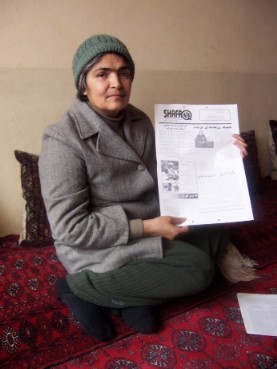
Afghanistan’s new constitution enshrines the right of freedom of the press and today the capital Kabul has scores of newspapers. But the Kabul journalists we interviewed who dared to question the actions and past crimes of warlords are constantly threatened. US media have failed to adequately cover the oppressive conditions under which Afghan journalists must work in order to report the truth. Noorani, the editor of Rozgaran (“News of the Day”), has been threatened many times for publishing critical opinions of warlords. Even the government looks sternly upon his work – investigators have called him eleven times and given him two warnings. If he gets a third warning, he will be forced to shut his paper down. Another journalist we spoke with, Gulalai Habibi, the editor of Shafaq, refuses to remain quiet. “I am not afraid. I know that if I write against the warlords my life will be in danger, but what should we do? If our generation will not disclose their crimes, they will continue for more generations and then our country will be destroyed forever.”
- Download a flyer.
- AWM Interview on Democracy Now!
- Click here if you are a member of the media and are interested in an interview.
